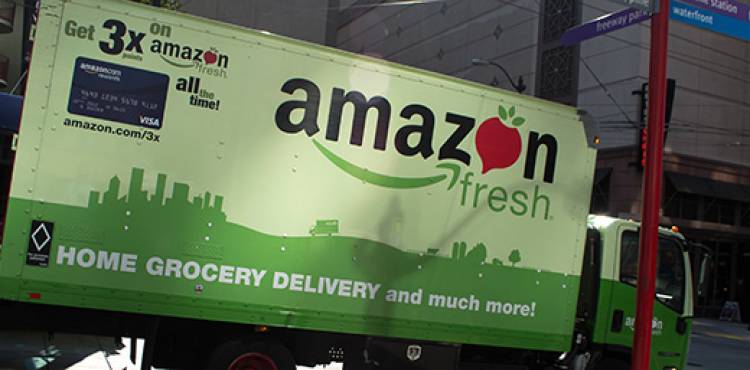Can Amazon make the case for better grocery delivery services?

Other than Peapod or FreshDirect, shopping for groceries online leaves something to be desired. Although some of the United State’s biggest and most successful supermarkets offer the service, many of the websites are old, slow and clunky. To say the least, the user experience is lackluster – and that’s not even taking into consideration the limited selection that many of these sites make available.
So if anyone were to come to the rescue, Amazon would be the one to do it. And surprisingly, AmazonFresh, the eCommerce giant’s service of having grocery items purchased online and delivered to customers’ homes, isn’t new. It began in Seattle in 2007 and since then has expanded to Los Angeles and San Francisco.
According to a survey conducted by CNet.com, 23 percent of respondents would use AmazonFresh if it were available in their area, but not at the $300 membership fee, which many consider a tad exorbitant. Granted, the membership includes an Amazon Prime account, which lowers the price of membership to about $220. But still, it leaves many individuals leery of paying a fairly large price tag for a mere convenience – and one that might cut in on a domestic chore that some say is actually enjoyable.
About 15 percent of CNet’s survey respondents said that they wouldn’t use the service for fear of not getting their money’s worth. And the most-popular response to CNet’s query? Twenty-eight percent just like going to the supermarket because they can touch the items before they buy them. An aspect of traditional grocery shopping that one CNet editor put to the test.
“Putting trust into the hands of robots and employees who aren't necessarily as observant isn't easy,” Sharon Vaknin admitted when talking about choosing the right produce. “While Amazon does let you choose between ‘ripe’ and ‘not ripe’ avocados, everything else is a gamble.
” Regardless of the potential for mass appeal or lack thereof, by offering its service, Amazon will inherently change the face of online grocery shopping – just as it did with eCommerce. WalMart has already responded by offering a similar program called WalMart To Go, while Instacart, a delivery service that will pick up food for users at their local supermarket and have it to their door on the same day, is also on the move in San Francisco and Chicago.
If CNet’s survey, which at the time of this blog’s publication was still taking submissions, is indicative of the perception of the overall population, most folks outside of Seattle, L.A. and San Francisco probably shouldn’t expect the green delivery trucks to be rolling into their cities anytime soon. For the majority, it seems as though the cost of membership doesn’t seem worth it convenience-wise. For example, although the time-savings factor could help justify the cost of membership, CNet’s survey indicated that only 1 percent of respondents would use AmazonFresh because they don’t have time to go grocery shopping.
Currently, there aren’t any firm announcements as to when it will move into other markets. What consumers can expect, however, is a gradual shift toward similar services from the nation’s grocery stores and supermarkets. After all, Amazon has a tendency for shaking up the way companies do business – and usually, the result comes in the form of a better user experience.
To get information about a plug-in for marketing your website's products on the classic Amazon marketplace, click on the button below for a brochure.
Trackback URL for this blog entry.
